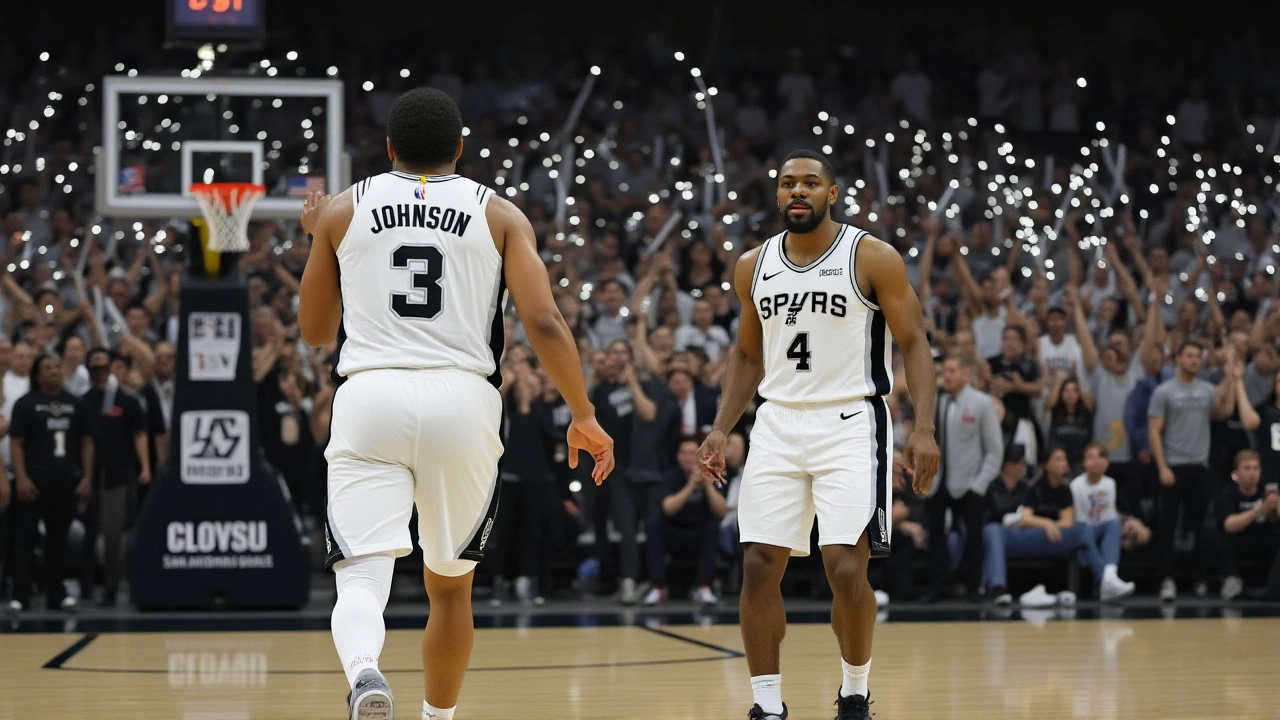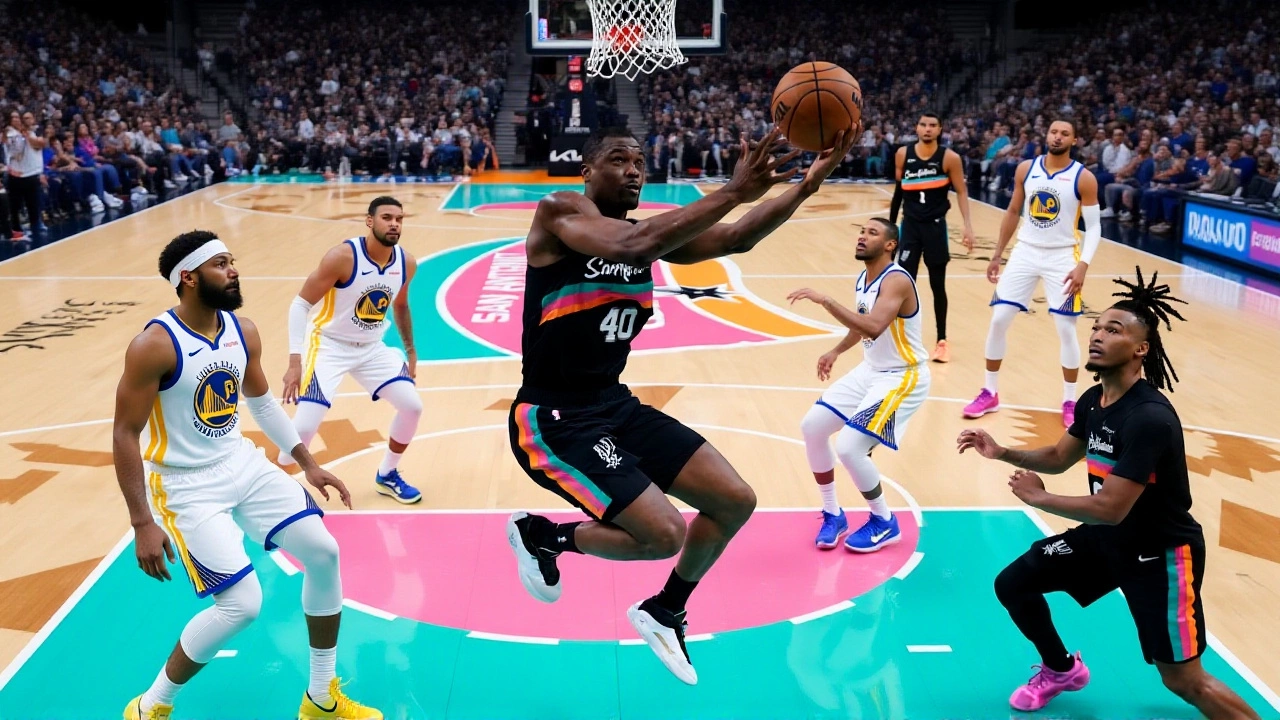When Victor Wembanyama crumpled to the floor in the third quarter of the San Antonio Spurs’ November 14, 2025 loss to the Golden State Warriors at Chase Center in San Francisco, the basketball world held its breath. The 21-year-old French phenom, averaging 24.3 points, 10.7 rebounds, and nearly four blocks per game this season, had just suffered a left calf strain — a diagnosis confirmed by MRI on November 16–17, 2025. The San Antonio Spurs didn’t rush to announce a return date. They didn’t need to. For them, caution isn’t policy — it’s tradition.
The Injury That Stopped the League
Wembanyama didn’t know exactly when the injury occurred during the game. He felt it afterward — a tightness, a pop, then the familiar dread. By Saturday morning, the Spurs’ medical team, led by Dr. David Morriss and Dr. Matt Ruder, had the scans. A Grade 2 strain. Not catastrophic, but dangerous. Calf injuries in elite athletes have a notorious habit of coming back, often worse. The Spurs’ playbook? No shortcuts. They ruled him out for Sunday’s game against the Sacramento Kings at Golden 1 Center, citing ‘left calf tightness’ — the clinical term for ‘we’re not taking any chances.’
Why the Spurs Won’t Rush Him Back
Here’s the thing: this isn’t the first time the Spurs have played the long game with a star’s health. Since Peter J. Holt bought the franchise in 1996 for $75 million, they’ve built a reputation on patient, methodical care. Their five NBA titles didn’t come from pushing players through pain. They came from letting them heal — fully. When Tim Duncan missed 12 games with a hamstring strain in 2004? He didn’t return until he was 100%. When Manu Ginóbili sat out six weeks after a calf tear in 2010? He came back sharper. That’s the culture. And now, under head coach Michelle Clark-Heard and general manager Brian Wright, it’s the same.
ESPN’s Shams Charania confirmed the timeline on November 18: ‘At least two weeks… possibly three.’ Analyst Danny Green, who’s been there himself, added: ‘I rushed back once. Two weeks. Should’ve taken three. Scared someone else would take my minutes.’ He paused. ‘I didn’t want to be the guy who got hurt again.’ That’s the fear every player feels. The Spurs? They don’t want to be the team that made it happen.

The Bigger Picture: Wemby’s Value and the Spurs’ Future
Wembanyama isn’t just a player. He’s the reason the Spurs, long stuck in the lottery after the Popovich era, suddenly have hope again. He’s the first player since LeBron James to average 24/10/3 in his first full season. He’s the anchor of a rebuild that’s already ahead of schedule. And yet, the team didn’t panic when he went down. No trade rumors. No fire drills. Just silence — and a medical protocol.
On November 20, Marilyn Dubinski wrote on Pounding the Rock, the Spurs’ most trusted fan blog: ‘Wemby is not injury prone, and the Spurs have zero regrets about Fox.’ That’s the tone. No hysteria. Just context. He’s played 12 games this season. No major injuries. No missed games before this. The calf strain? A fluke. A bad step. Not a pattern.
What’s Next? The Grizzlies, the Timeline, and the Uncertainty
The Spurs’ next game is against the Memphis Grizzlies at FedExForum — but no update has been given on Wembanyama’s status. That’s by design. The team evaluates players week-to-week. No target date. No ‘hope to return by X.’ They’ll check his strength, his range of motion, his sprint times. They’ll test him in practice. Only then — maybe — will they say yes.
And if he returns in three weeks? That’s fine. If it takes four? That’s fine too. The Spurs aren’t chasing playoff seeding. They’re chasing legacy. And legacy isn’t built by rushing a 7-foot-4 kid back from a calf strain. It’s built by letting him come back stronger.

Why This Matters Beyond San Antonio
Other teams are watching. The Los Angeles Lakers and Boston Celtics have burned themselves before with premature returns. The Philadelphia 76ers learned the hard way with Joel Embiid. The Spurs? They’ve turned restraint into a competitive advantage. When a franchise has been around for 49 seasons — and won five championships — they’ve seen every trend, every gimmick, every ‘hurry-up’ culture fail.
Wembanyama’s injury is a test. Not just for his body, but for the entire NBA’s approach to young superstars. Do you monetize him? Do you push him? Or do you protect him — even if it means losing a few games? The Spurs have already answered. And the league is listening.
Frequently Asked Questions
How long is Victor Wembanyama expected to miss, and why isn’t there a fixed return date?
The San Antonio Spurs have indicated Wembanyama will miss at least two weeks, with a potential return window of two to three weeks from his November 14 injury. No exact date is given because the team evaluates players on a week-to-week basis, prioritizing full rehabilitation over arbitrary timelines — especially for calf strains, which carry a high re-injury risk. Their medical staff, led by Dr. David Morriss and Dr. Matt Ruder, won’t clear him until he passes strength, agility, and sprint tests.
Is Victor Wembanyama considered injury-prone?
No. Before this calf strain, Wembanyama had played all 12 games of the 2025–26 season without missing a single contest due to injury. He’s never had a major lower-body issue in his professional career, dating back to his time in France with ASVEL Basket. Analysts like Marilyn Dubinski of Pounding the Rock emphasize this isn’t a pattern — it’s an isolated incident. His size and athleticism make him uniquely vulnerable, but his medical history remains pristine.
How does the Spurs’ injury management compare to other NBA teams?
The Spurs are among the most conservative in the league. While teams like the Lakers or 76ers have rushed stars back from calf or hamstring injuries — often with setbacks — San Antonio has prioritized long-term health since Peter J. Holt’s ownership began in 1996. Tim Duncan, Manu Ginóbili, and Tony Parker all benefited from extended rehab periods. Their record shows it works: five championships, no major player burnouts. Other franchises are now modeling their protocols after San Antonio’s.
What impact does Wembanyama’s absence have on the Spurs’ season?
The Spurs are 6–6 without him, still in playoff contention despite playing in the brutal Western Conference. His absence exposes their lack of depth — particularly in rim protection and playmaking — but it also gives younger players like Blake Wesley and Jeremy Sochan valuable minutes. More importantly, the organization views this as a test of their rebuild philosophy: sustainability over short-term wins. Even without Wemby, they’re not tanking. They’re training.
Why did Danny Green say he regretted returning too soon?
The former NBA guard, who played for the Lakers and Celtics, suffered a similar calf strain during his career and returned in two weeks — only to re-injure it a month later. He told ESPN that fear of losing minutes led him to rush back, but he later admitted he should’ve taken an extra week. His warning to Wembanyama and the Spurs was clear: the game won’t wait, but your body will thank you if you do. It’s a rare, candid admission from a veteran who’s seen how quickly momentum can vanish after a bad return.
What’s the financial impact of Wembanyama’s injury on the Spurs?
While the Spurs’ $2.65 billion valuation (per Forbes, 2025) isn’t immediately threatened, ticket sales and merchandise revenue dip during star absences. However, their conservative approach actually protects long-term value. Rushing Wembanyama back could risk his career longevity — and with him under a max contract through 2029, preserving his health is the only smart financial move. The team’s ownership, led by Peter J. Holt, has always prioritized franchise integrity over short-term gains.